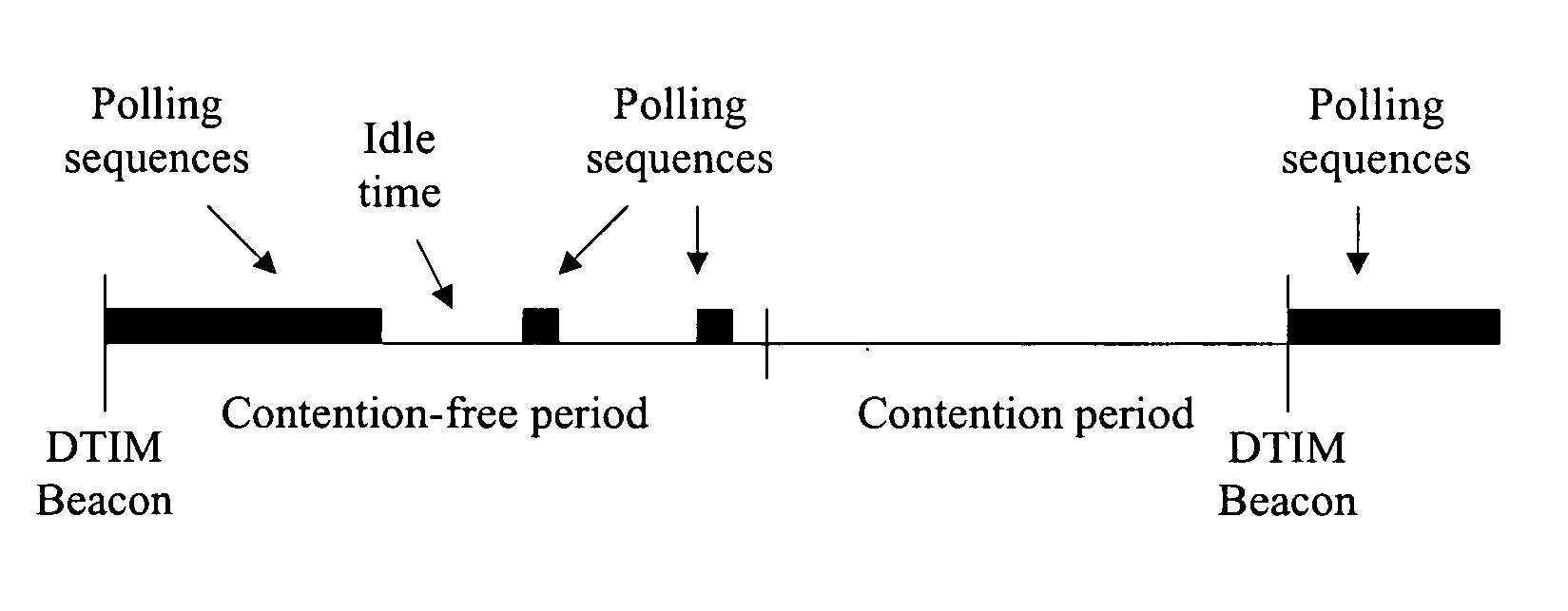Point-controlled contention arbitration in multiple access wireless LANs
a wireless lan and point control technology, applied in multiplex communication, data switching networks, data switching details, etc., can solve the problems of reducing the dtim beacon rate, waking up more stations, and wasting bandwidth, and achieve the effect of mitigating contention
- Summary
- Abstract
- Description
- Claims
- Application Information
AI Technical Summary
Benefits of technology
Problems solved by technology
Method used
Image
Examples
Embodiment Construction
[0065] The present invention contemplates a method for managing prioritized channel access. Prioritized channel access is required for parameterised and prioritized stations. “Parameterised stations” are QoS stations with flows that require guaranteed bandwidth and bounded delays. It is assumed that such stations will use a signaling protocol, for example RSVP with SBM, to request a constant service rate. Prioritized stations are QoS stations that transmit frames with a priority higher than “best effort”, without using a signaling protocol to set delay and bandwidth parameters.
[0066] The method contemplates utilizing an AP channel access arbitrator that monitors the service rate for “parameterised QoS stations” and initiates unscheduled Point-controlled Contention-free Burst (“P-CFB) polling, as required, during the contention period, to sustain a constant service rate for such stations.
[0067] WSTAs may optionally use a signaling protocol to establish service rate parameters. The ...
PUM
 Login to View More
Login to View More Abstract
Description
Claims
Application Information
 Login to View More
Login to View More - R&D
- Intellectual Property
- Life Sciences
- Materials
- Tech Scout
- Unparalleled Data Quality
- Higher Quality Content
- 60% Fewer Hallucinations
Browse by: Latest US Patents, China's latest patents, Technical Efficacy Thesaurus, Application Domain, Technology Topic, Popular Technical Reports.
© 2025 PatSnap. All rights reserved.Legal|Privacy policy|Modern Slavery Act Transparency Statement|Sitemap|About US| Contact US: help@patsnap.com


